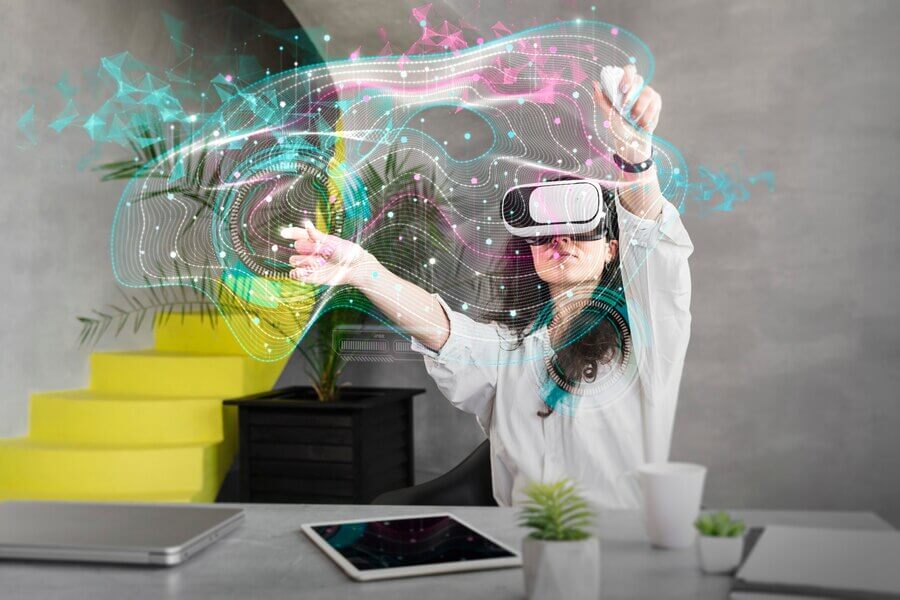Introduction
Mobile applications have nowadays become a staple of everyone’s lifestyle, changing the way we interact, shop, and work. The need for mobile apps will always be high and has witnessed a great number of trends that highlight the future of mobile in a new way. In this post, we’ll focus on the patterns leading to the increase in mobile application demand as well as the ways businesses can utilize these trends to dominate in the digital era.
1. Rise of 5G Technology
The implications of 5G for mobile application development are huge and will alter the space. It supports peak download and upload speeds, has ultra-low latency, and offers more bandwidth than previous generations, down the path generating engaging interactive, and immersive mobile experiences. It is playing a vital role in creating high-performing applications that utilize the enhanced streaming of HD video, gaming algorithms, and augmented reality (AR) applications offered through the new 5G network.
2. Increased Adoption of Artificial Intelligence (AI) and Machine Learning (ML)
AI and ML technologies are becoming increasingly useful tools to be integrated into mobile apps, increasing the power and accuracy of their services. These technologies enable apps to offer more intelligent functionalities that encompass predictive analytics, personalized recommendations, and natural language processing. Mobile apps are getting integrated with AI and ML to increase customer engagement, enhance operations, and come up with creative ideas for mobile apps.

3. Growth of Augmented Reality (AR) and Virtual Reality (VR)
Innovations like AR and VR are completely changing what mobile apps can do, introducing us to amazing possibilities that were previously unimaginable. AR and VR are being employed in different sectors, like gaming, education, healthcare, and retail, to form the most impressive, interactive apps. With the increased demand for the device of augmented reality and virtual reality, developers now need to develop more complex and realistic applications for users.
4. Focus on User Experience (UX) Design
User experience (UX) design nowadays is getting more and more crucial in the promotion of the development of mobile apps. Businesses are now prioritizing developing apps that are seamless and intuitive for the users, with an emphasis on being usable, accessible, and uncomplicated. It’s also causing mobile apps to incorporate UX design principles and methodologies, to make sure that mobile apps exactly fit the standards of modern users.

5. Integration of Internet of Things (IoT)
The Internet of Things (IoT) is seamlessly and pervasively weaving various devices and systems like no other time in history, and mobile applications are undeniably at the forefront of this connectivity. Mobile apps are coming to life through their ability to control and even monitor the Internet of things making users able to run their smart homes, smart cars, and appliances from their phones. Yet because of it, mobile applications, offering higher convenience levels for customers and more control, are becoming more IoT-enabled.
Conclusion
Mobile app demand is experienced by considering the trends that define the future of mobile technology. Companies that will play catchup with mobile applications and use them to create applications that are innovative, fun, and interactive will be strong in the digital market. 5G technology, and AI and ML, AR and VR, principles of UX design, and IoT integration come into play here. The businesses that adopt these technologies create mobile apps that provide advanced functions and help the industries grow.
FAQs
1. How can businesses leverage the trend of 5G technology for their mobile apps?
The mobile apps of businesses can be optimized for additional speed of downloads and uploads, less latency, and the ability to carry larger volumes of data using 5G technology. This may be possible through the implementation of various components- multimedia content with high-quality, real-time interactive features, and AR/VR technologies which can gain additional advantages from the 5G.
2. What are some examples of AI and ML applications in mobile apps?
Some examples in mobile apps like personalized recommendations using user behavior, chatbots for customer service, image and speech recognition to improve user experience, and data-driven decision-making using machine learning techniques are available.
3. How can businesses ensure a seamless user experience (UX) in their mobile apps?
To make sure your app has a consistent UX of high quality, businesses should conduct user research, design user interfaces that are easy to use and with low or absent flaws, optimize performance, and load times, and continue to collect feedback to make the app better from the feedback given by the users.




